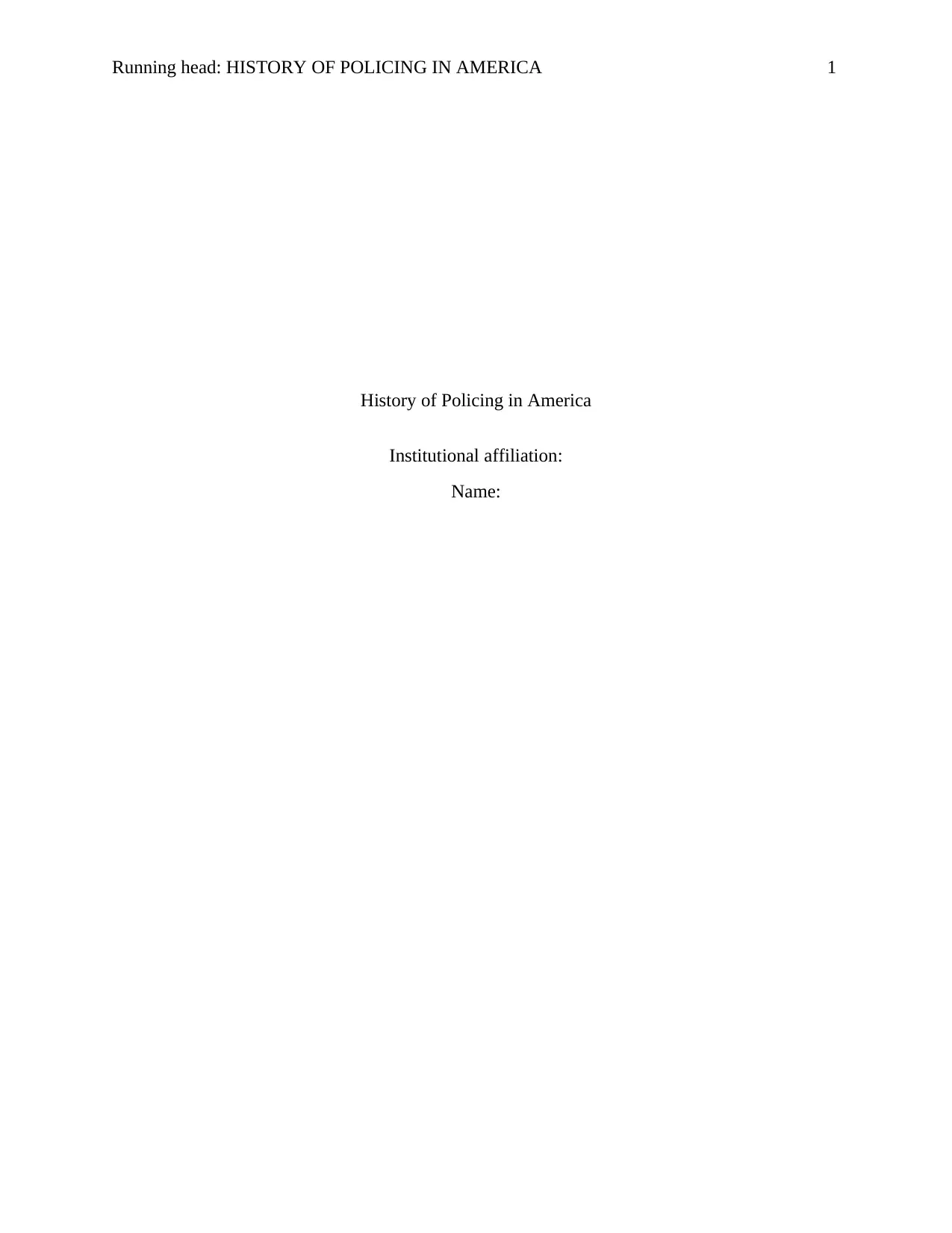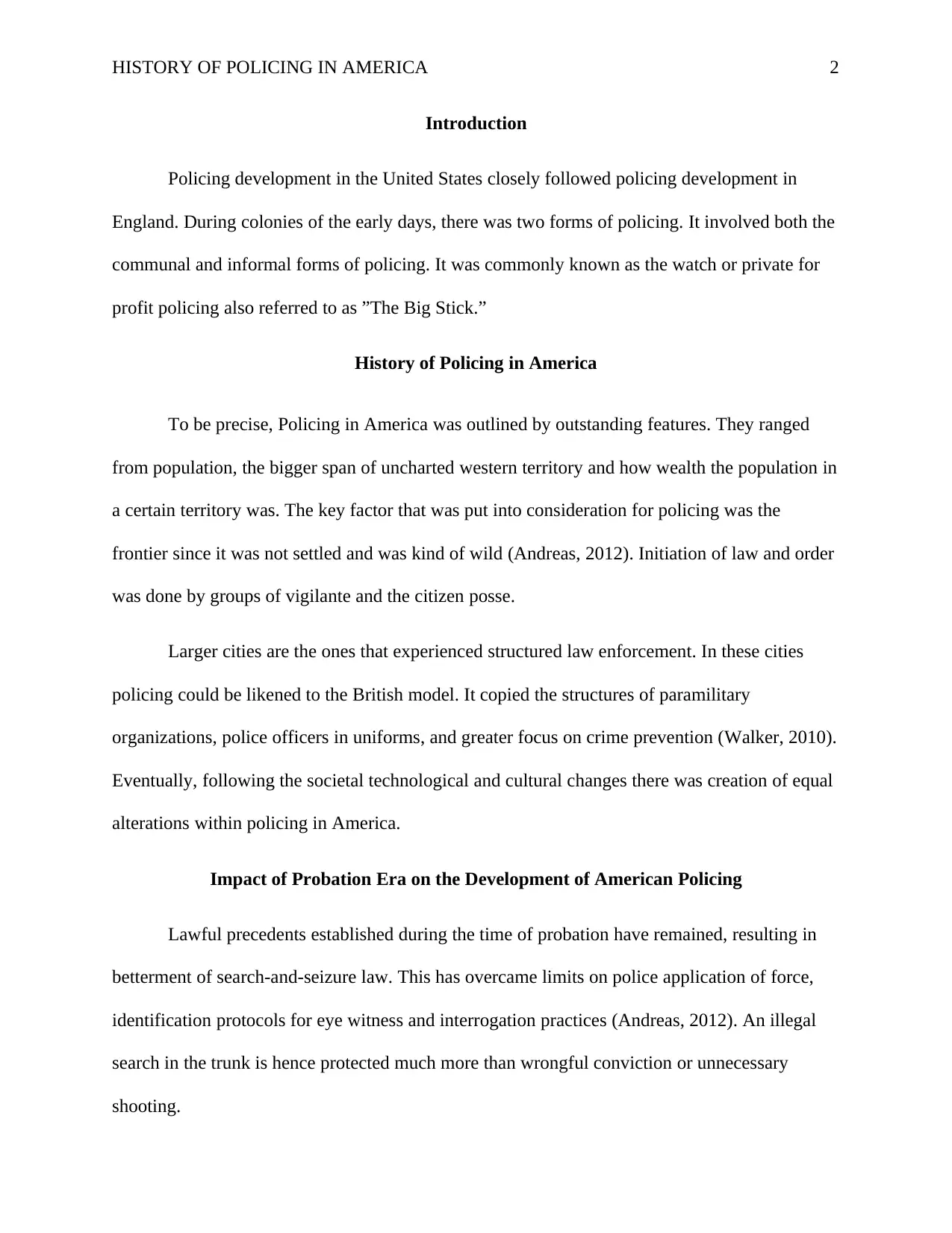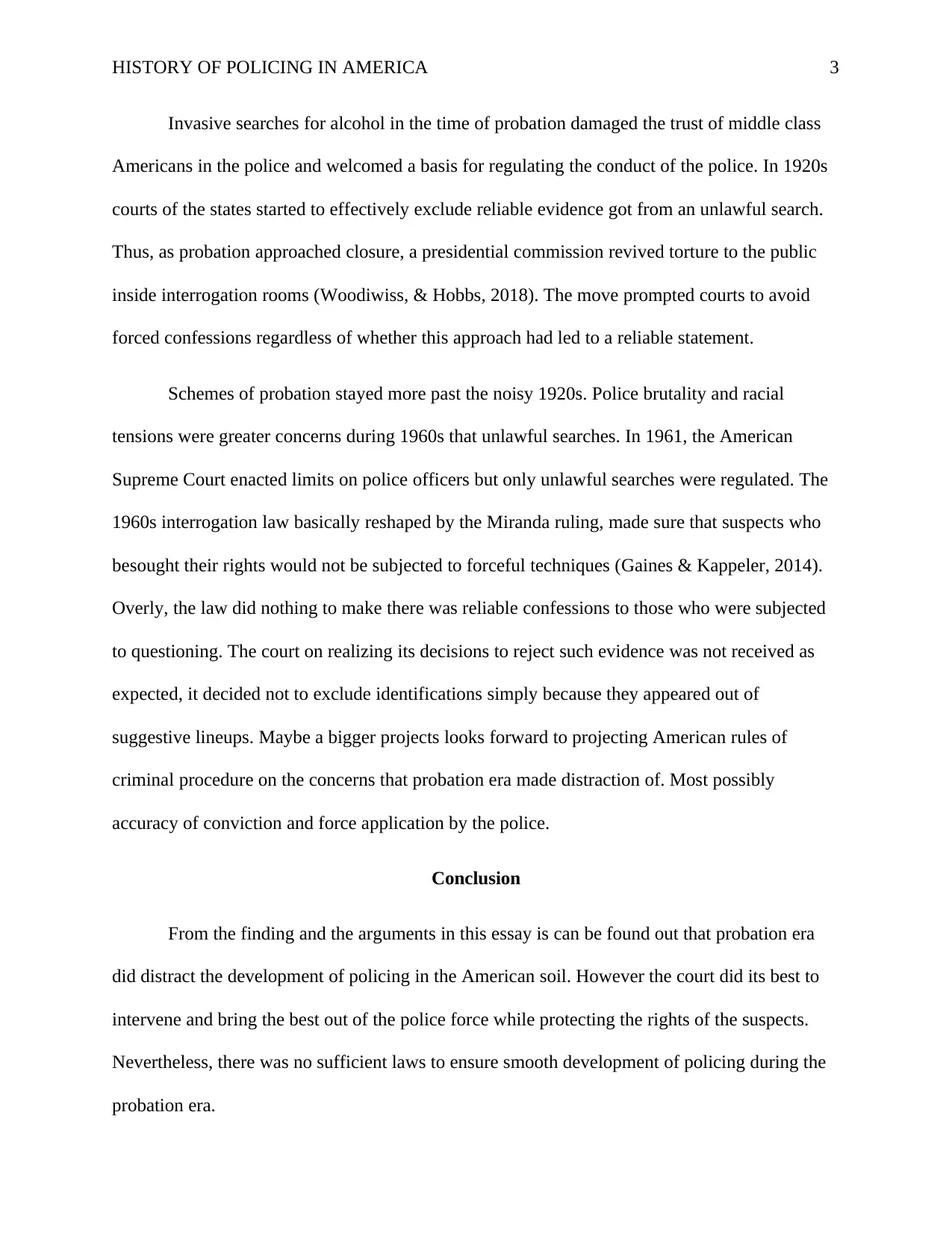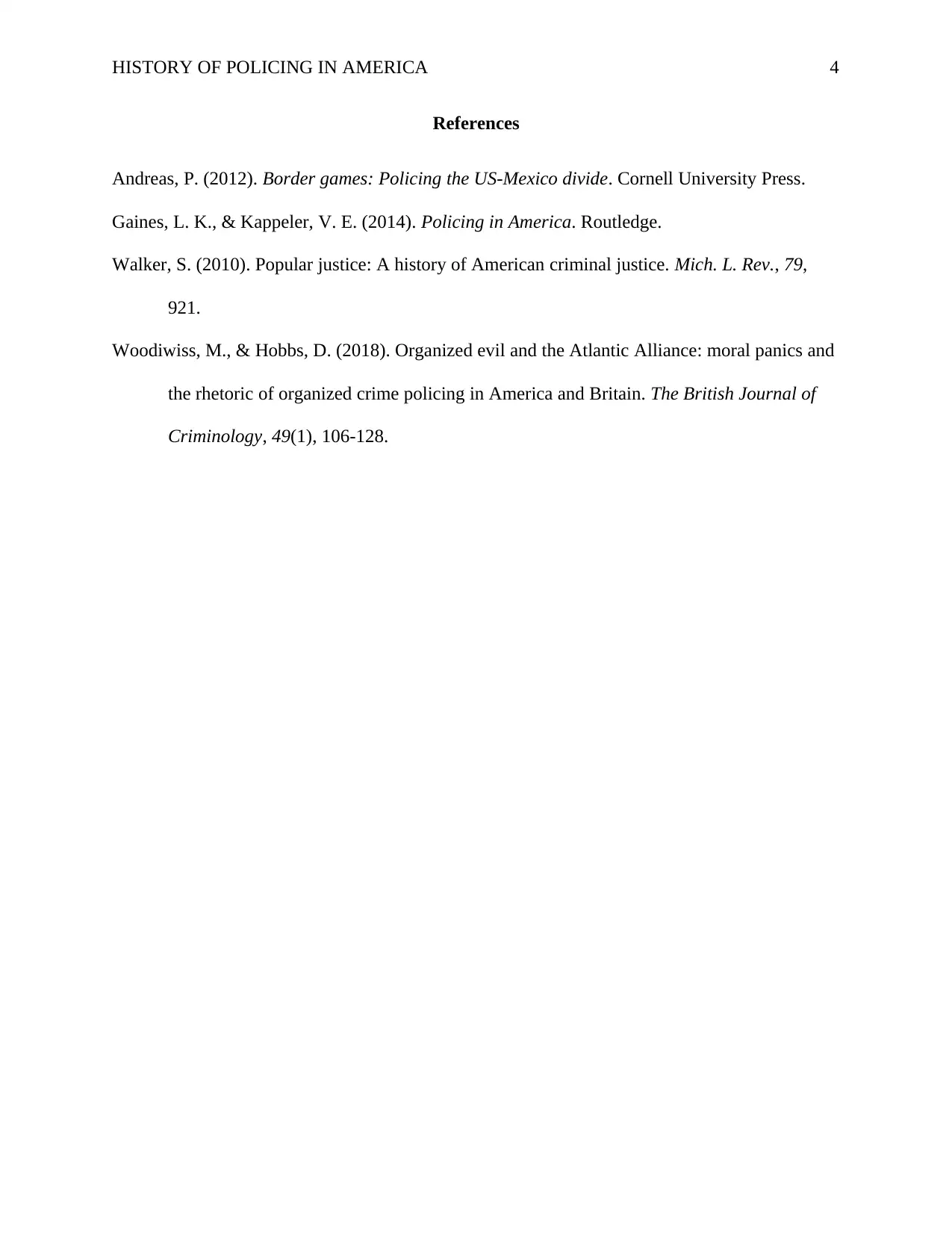Probation Era Impact: History and Development of Policing in America
VerifiedAdded on 2023/06/05
|4
|764
|463
Essay
AI Summary
This essay examines the history of policing in America, focusing on the significant impact of the Probation Era. It discusses how policing in the early United States evolved from informal, communal methods to more structured, paramilitary organizations, influenced by factors such as population size and the frontier. The essay highlights the legal precedents established during the Probation Era, which led to changes in search-and-seizure laws, limits on police force, and interrogation practices. The courts intervened to regulate police conduct, particularly regarding unlawful searches and forced confessions. Despite these efforts, the essay concludes that the Probation Era did distract the development of policing, though the courts worked to balance law enforcement with the protection of suspects' rights. Desklib provides this essay and other resources for students.
1 out of 4





![[object Object]](/_next/static/media/star-bottom.7253800d.svg)